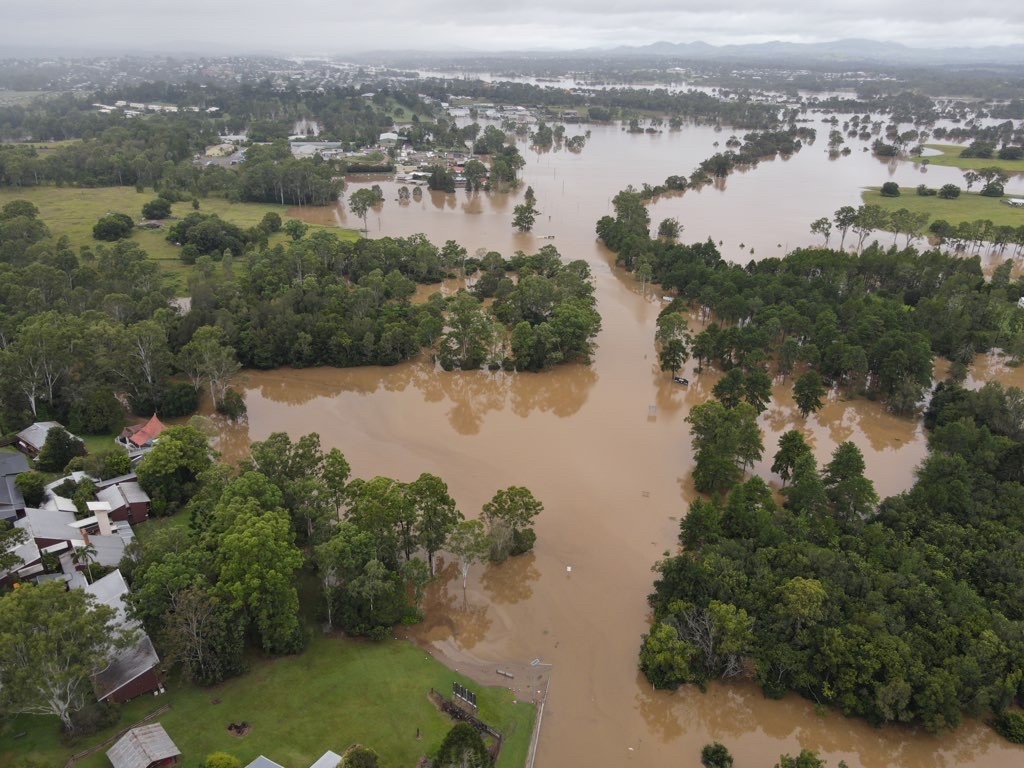How La Niña and climate change are fueling disasters

The Center for Disaster Philanthropy’s (CDP) Learning and Partnerships team creates disaster profiles whenever there is a significant, catastrophic disaster that meets the criteria for CDP’s response. In three weeks in February-March there were four new profiles created and three of them – mudslides in Brazil, fires in Argentina and floods in Australia – were linked to La Niña events (the fourth was the humanitarian crisis in Ukraine).
It seemed weird to me that the same concept popped up for three different disasters, especially when they are as seemingly disparate as floods, fires and mudslides. I’ve heard of La Niña but didn’t know a lot about it. So, I decided to look it up.
La Niña and her brother El Niño are amplified by the effects of climate change, and, in turn, worsen climate change itself.
According to SciJinks, “Like many siblings, the two weather patterns are opposites in almost every way. La Niña causes water in the eastern Pacific to be colder than usual. In the same region, El Niño can cause the water to be warmer than usual. Areas that are hit with drought during La Niña years are pummeled with rain in El Niño years.”
Dr. Nina Ridder of the University of New South Wales’ Climate Change Research Centre says that the rain bombs and continuing rainfall on Australia’s east coast are “due to a very slow-moving low-pressure system that is dragging moist air from the Coral Sea onto the east coast … Climate change is probably also a factor because as the atmosphere gets warmer, it can hold more moisture. For each degree that the atmosphere is warmed, it can hold 7 per cent more water and that’s 7 per cent more water that can fall to the surface.”
Australia faced multiple years of high temperatures and wildfires. This leaves the ground more susceptible to flooding when heavy rain occurs. In Brazil, deforestation of the mountainside caused by the unregulated building of the favelas was a contributing factor. And Argentina had years of drought, leaving the land at risk for fires.
According to the United Nations’ World Meteorological Organization, there was a fivefold increase in weather and climate disasters in the past 50 years. Between 1970 and 2019, there were 11,000 such disasters, causing $3.6 trillion in losses and two million deaths.
Climate change means “longer and more intense heat waves, longer-duration droughts, larger and more costly wildfires and more devastating floods,” according to climatologist Bill Patzert. He adds, “La Niña’s reach, enhanced by climate change, is global … Drought in California’s Sierra Nevada mirrors the two-decade drought in the Horn of Africa.”
The good news, if there is such a thing in a crisis like this, is that climate change, La Niña and El Niño, are phenomena that can be researched and mitigated to certain degrees. In CDP’s Issue Insights on Climate Change, Drought and Extreme Heat and Global Warming, there are a number of suggestions for philanthropy. I’ve highlighted a few of them here:
- Support eco-farming initiatives. Drought is often exacerbated by high water usage for agriculture so funders should support agricultural initiatives and technological adaptations that reduce reliance upon water and/or decrease amount of water used.
- Fund drought impact projects. Drought often leads to hygiene issues and famine. Support delivery of food supplements and projects that provide low-cost grains, proteins and other foods to communities. Similarly, projects that address water delivery and provision of water for sanitation and hygiene (WASH) are important.
- Support the development of water retaining gardens and initiatives. This includes prioritizing public policies that include water retention gardens, native plantings and better water use practices.
- Support the adaptation of water-saving appliances and fixtures for low-income communities. People with the least resources would benefit the most from reducing water bills. Given that most of the people living in poverty around the world live on dry lands, initiatives to support more efficient use of water would go a long way.
- Invest in multi-system prevention and mitigation measures. Investing in things like urban forestry, community gardens and natural land preservation not only helps pull carbon out of the atmosphere, but helps reduce surface heat, feed communities, slow down the passage of water through soil and stabilize the soil around them – reducing the risk of flash flooding.
- Support initiatives to create more resilient critical infrastructure systems. Extreme temperatures can put additional stress on critical infrastructure systems, causing them to fail when they are most badly needed to reduce the impacts of extreme weather.
- Support racial justice, Black Lives Matter and other movements that seek to eliminate inequities in society. Climate change in North America disproportionately affects Black and Hispanic people, as well as Indigenous communities on reservations. Climate justice works to embed issues and knowledge from racialized communities into the climate change movement.
- Consider unconventional funding opportunities. Some projects that could have an outsized impact on extreme heat and climate change may not qualify for traditional funding. Private philanthropy has opportunities to invest in projects like urban forestry, community orchards and gardens, unconventional public transit, cooling centers and other projects that may make a significant impact on extreme heat events.
- Look for opportunities to support people with disabilities and functional needs and other marginalized populations. Whether it is through the provision of low- or no-cost air conditioning units, accessible transportation to cooling centers, or other supports, investments in people with disabilities and functional needs and other marginalized populations will have a larger impact than investments in the general population.
